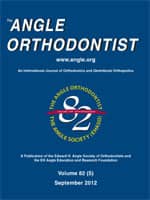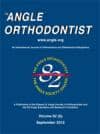
Post-treatment models of 23 patients treated with SureSmile were digitally superimposed on their corresponding virtual treatment plan models utilizing best-fit surface based registration. Individual tooth-position discrepancies between virtual treatment plan and actual outcome were then computed. Discrepancies less than 0.5 mm in mesial-distal, facial-lingual, and vertical dimensions, and less than 2 degrees for crown torque, tip, and rotation were considered clinically ideal. The study’s authors performed one-sided test of equivalence on each discrepancy measurement, with P < .05 considered statistically significant.
The findings showed that the mesial-distal tooth position was clinically ideal for all teeth with the exception of maxillary lateral incisors and second molars. Facial-lingual tooth position was clinically ideal for all teeth except maxillary central incisors, premolars, and molars, and mandibular incisors and second molars. Vertical tooth position was clinically ideal for all teeth except mandibular second molars. For crown torque, tip, and rotation, discrepancy exceeded the limits considered clinically ideal for all teeth except for crown torque on mandibular second premolars and crown tip on mandibular second premolars and first molars.







